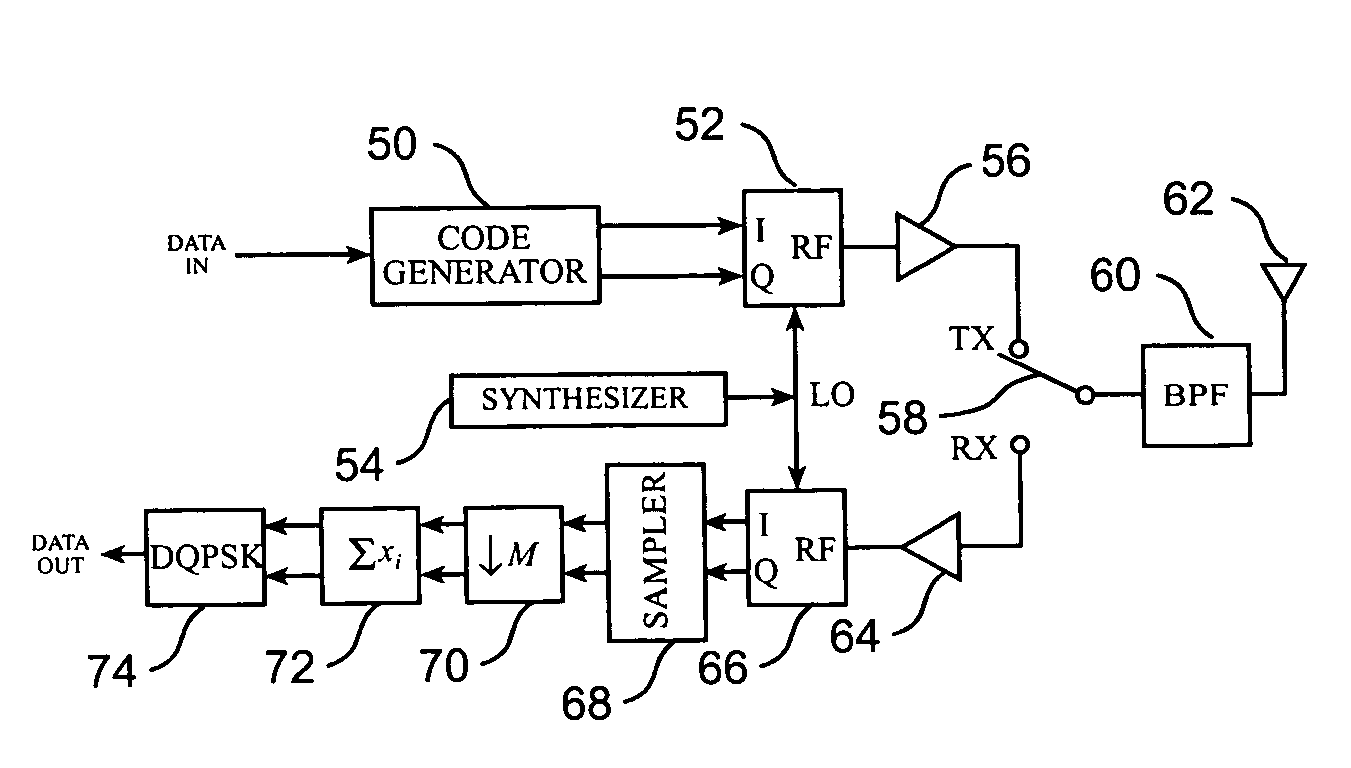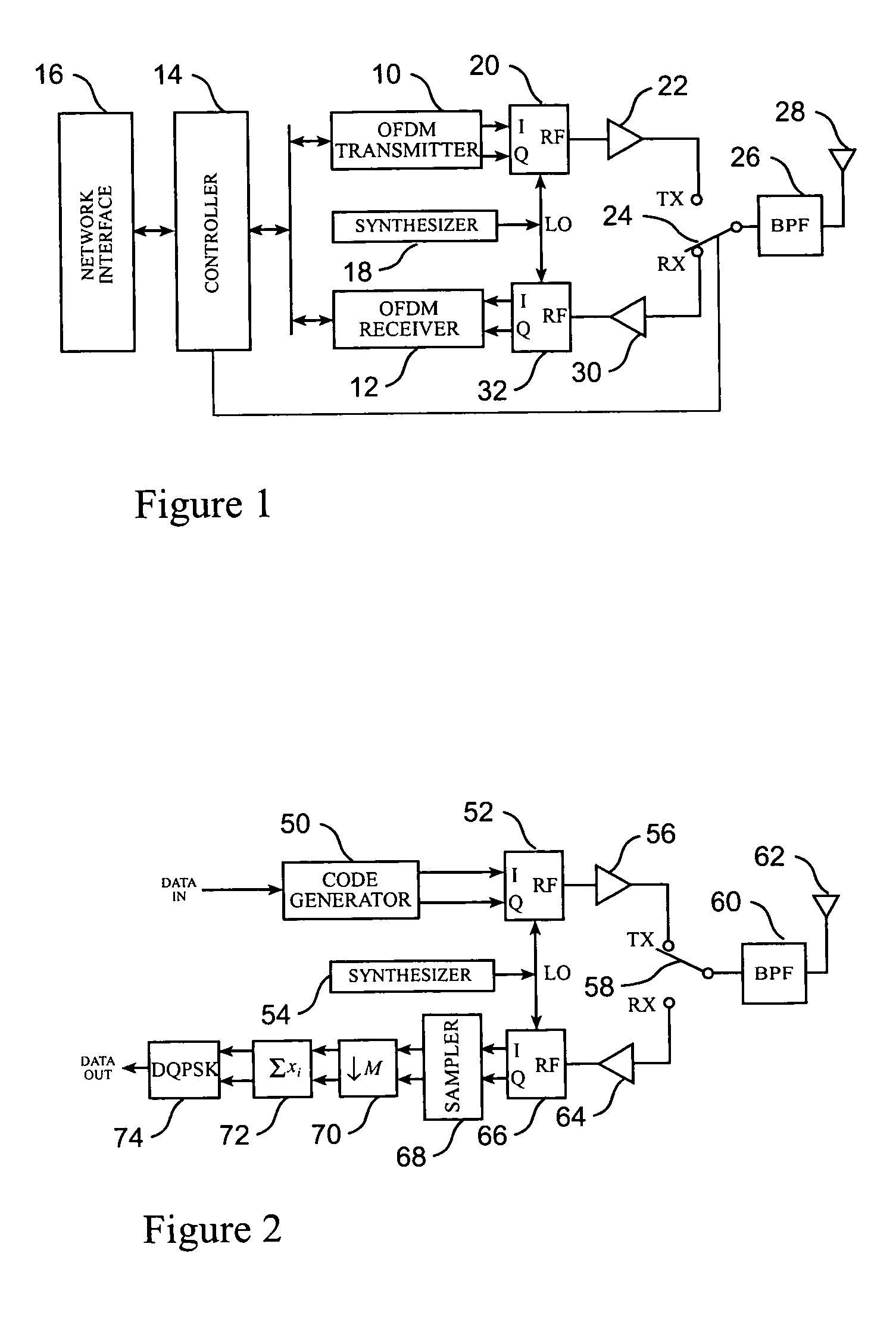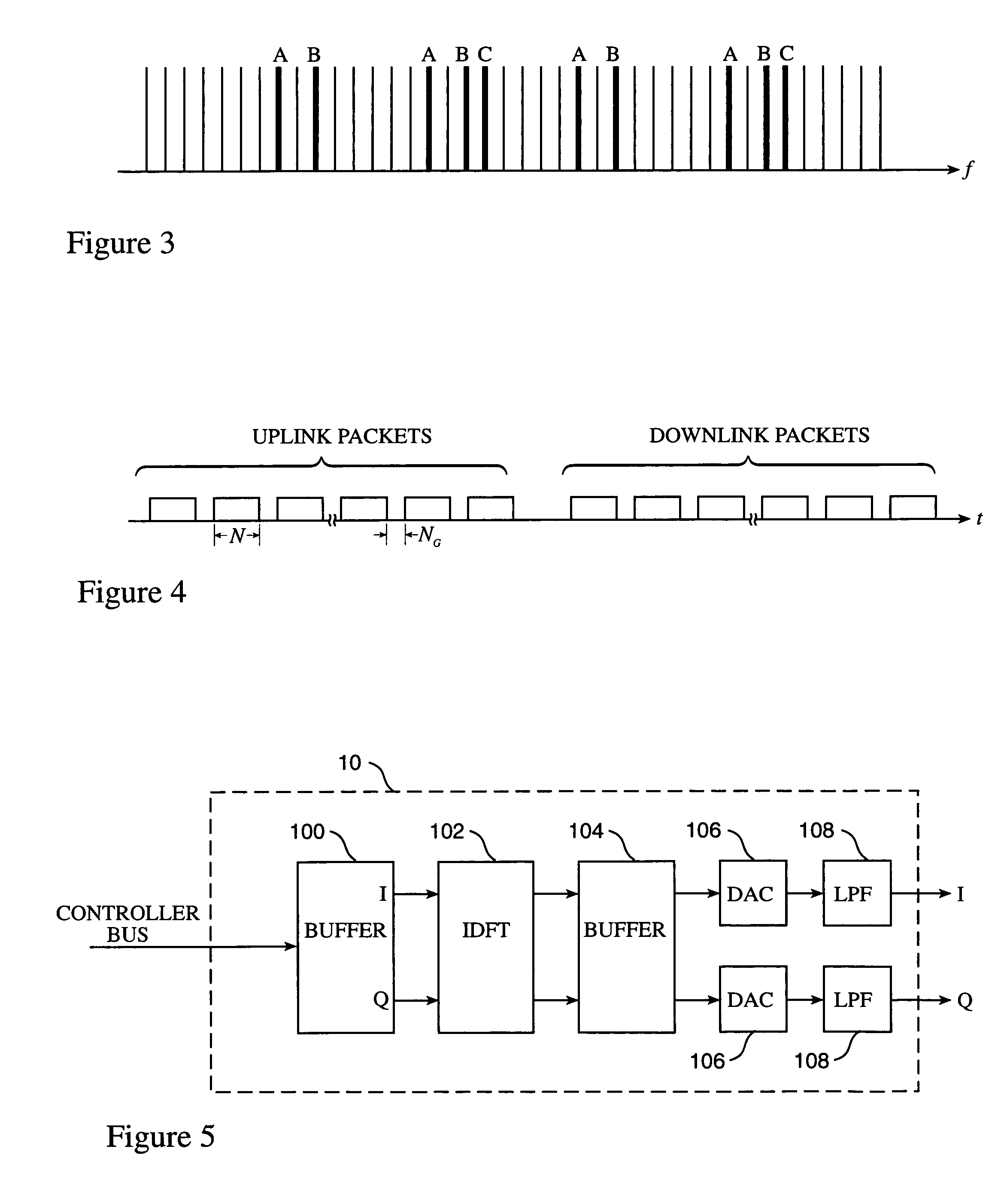OFDM system with simple terminals
- Summary
- Abstract
- Description
- Claims
- Application Information
AI Technical Summary
Benefits of technology
Problems solved by technology
Method used
Image
Examples
Embodiment Construction
[0027]FIG. 1 shows the preferred embodiment of the base station. The base station contains a standard OFDM transmitter 10 to generate the OFDM sub-carriers sent to the various terminals, and a standard OFDM receiver 12 to demodulate the signals from the terminals. Both transmitter and receiver are connected to a microcontroller 14 by a common data bus. The microcontroller handles the multiplexing and demultiplexing of the different terminals' information into a common OFDM signal, the allocation of sub-carriers to different terminals, channel estimation, data encoding and decoding, and diversity combining. The microcontroller sends and receives its information from a network interface 16, which interfaces the terminals' data to outside voice and / or data networks.
[0028]A radio frequency synthesizer 18 outputs a carrier wave at the center frequency of the base station. A quadrature modulator 20 converts the baseband signal from the OFDM transmitter 10 to a radio frequency signal cente...
PUM
 Login to View More
Login to View More Abstract
Description
Claims
Application Information
 Login to View More
Login to View More - R&D
- Intellectual Property
- Life Sciences
- Materials
- Tech Scout
- Unparalleled Data Quality
- Higher Quality Content
- 60% Fewer Hallucinations
Browse by: Latest US Patents, China's latest patents, Technical Efficacy Thesaurus, Application Domain, Technology Topic, Popular Technical Reports.
© 2025 PatSnap. All rights reserved.Legal|Privacy policy|Modern Slavery Act Transparency Statement|Sitemap|About US| Contact US: help@patsnap.com



